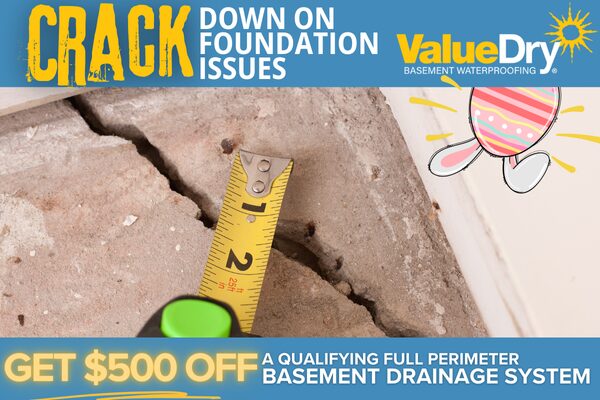Your Foundation, Your Future: Protect Your Home Before Spring Showers Cause Damage
- April 2, 2025
- No Comments
Your Foundation, Your Future: Protect Your Home Before Spring Showers Cause Damage
As April arrives with its familiar rhythm of rain and renewal, homeowners everywhere are ready for blooming flowers and warmer days. But beneath the surface of this cheerful season lies a serious threat: water intrusion and foundation damage caused by spring rains.
If your home doesn’t have a full perimeter drainage system in place, those seemingly harmless April showers could result in serious and expensive damage. Now is the time to act—protecting your foundation is protecting your biggest investment.
Why Spring Is the Most Critical Time for Waterproofing
Spring is known for its unpredictable weather and persistent rainstorms. The average rainfall in many mid-Atlantic states like Maryland and Virginia can range from 3.5 to 5 inches per month during the spring. All that moisture can spell trouble for foundations, particularly in older homes or those without modern drainage systems.
Compounding the problem is the thawing ground. As the frozen soil softens and shifts, it allows water to flow more easily around and against your home’s foundation. Combine that with the “clay bowl effect” and you have a recipe for water damage.
What Is the Clay Bowl Effect?
When your home was built, the ground around your foundation was dug out to make space for footings and basement walls. After construction, that soil was backfilled—but it was never as compacted as the untouched ground beyond. This creates what’s known as the clay bowl effect: the looser soil around your home absorbs water more quickly than the native soil, creating a sponge-like ring around your foundation.
The result? Increased hydrostatic pressure pushing water through even the smallest cracks and vulnerabilities. This leads to basement leaks, foundation cracks, mold, and—if left untreated—structural damage.
Signs Your Foundation May Already Be at Risk
It’s not always dramatic. Water damage often starts small. Here are a few telltale signs your home could already be in trouble:
- Hairline cracks in basement walls or floor
- Musty odors or visible mold growth
- Damp spots, especially after rainstorms
- Efflorescence (white, chalky residue) on concrete walls
- Doors or windows sticking, or uneven floors
According to the National Association of Realtors, foundation problems can decrease a home’s value by 10-15%, and 87% of home buyers will walk away from a home with signs of water damage during inspection.
Why Prevention Is Cheaper Than Repairs
Basement flooding costs homeowners an average of $4,000–$10,000 per incident, not including the cost of lost items or health effects from mold exposure. Compare that to the cost of a professionally installed perimeter drainage system, and the value becomes clear.
Even better? Value Dry Waterproofing is offering $500 off qualifying full perimeter drainage systems this April. That’s proactive protection with real savings.
Protecting Your Family’s Health
A wet basement isn’t just an eyesore—it’s a health hazard. Moisture encourages mold, mildew, and bacteria to thrive, and airborne spores can cause respiratory issues, especially for children and older adults.
A dry, sealed basement keeps your home’s air cleaner and healthier. Since up to 50% of the air on your first floor comes from the basement, proper drainage and moisture control are essential to your overall indoor air quality.




